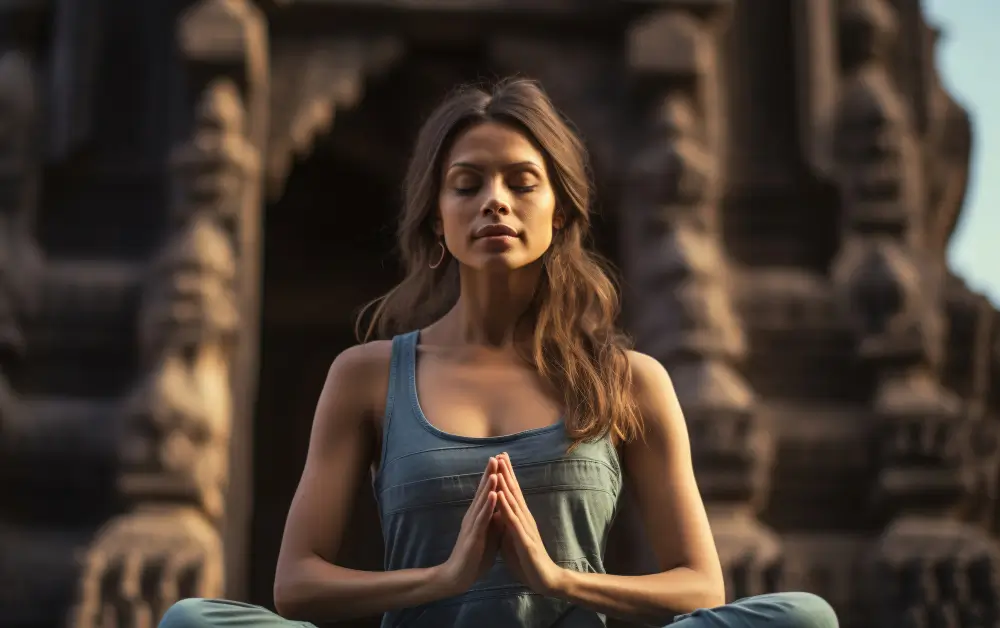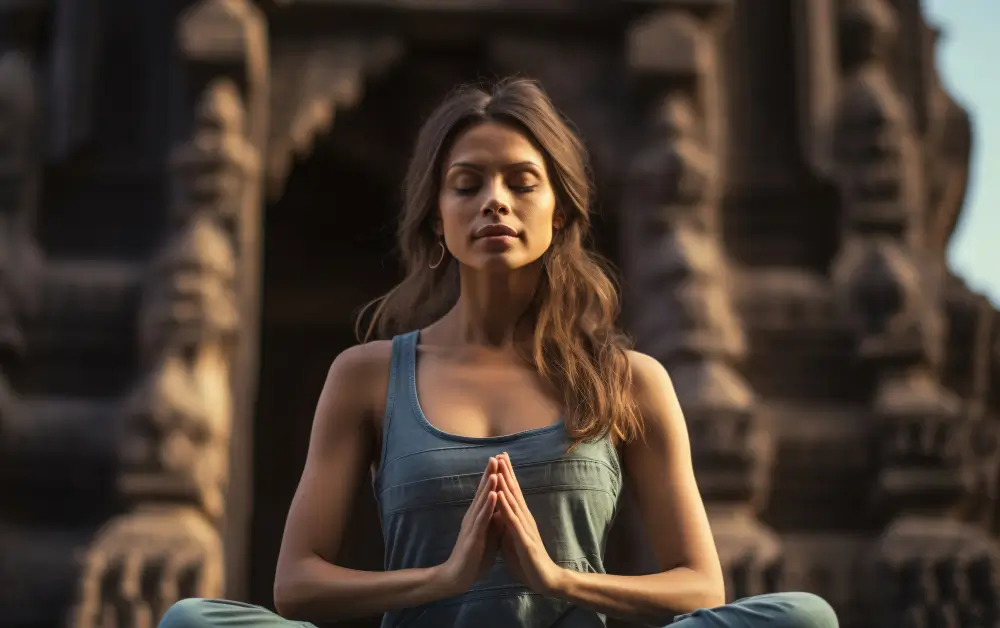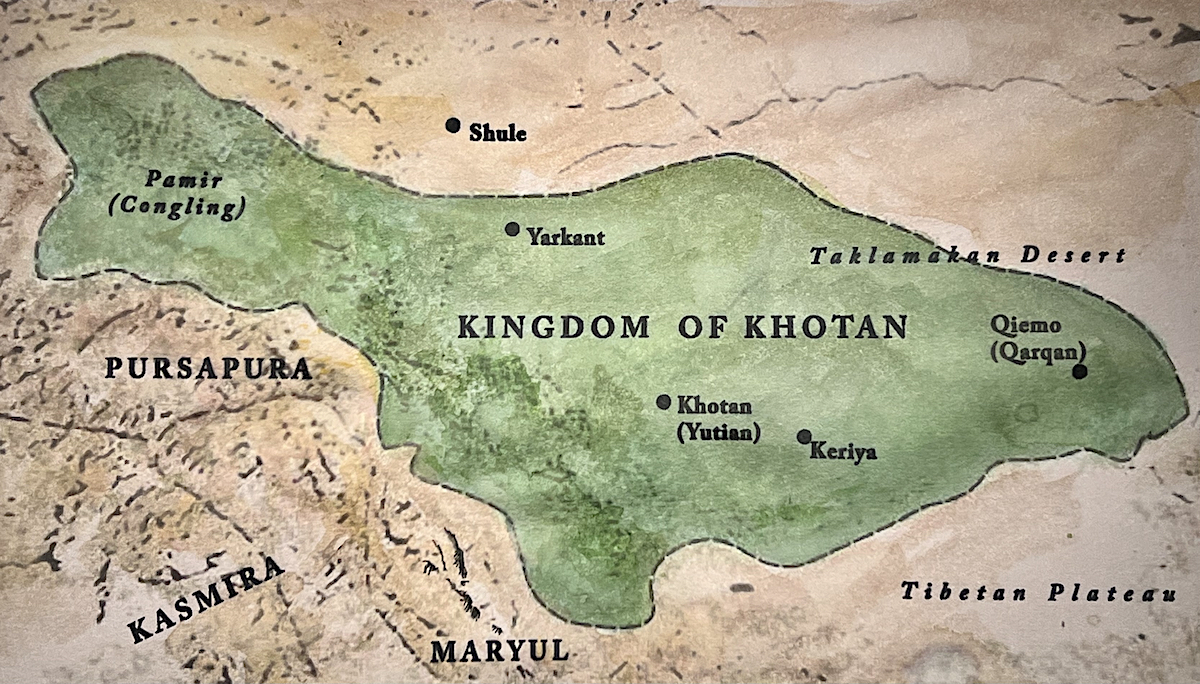Understanding Yoga Mudras: Meaning, Benefits, and Origins
Yoga is the process of awakening through practices that are physical, mental, motor, or intellectual and which originated in India. […]


Yoga is the process of awakening through practices that are physical, mental, motor, or intellectual and which originated in India. Yoga contains a number of components and the important one is Mudras. Mudras are fixed positions of the hands that serve as gestures, or seals that can effect and channel energy in the body. In this blog, we discuss the idea behind what is yoga mudras, including the definition, meaning, history, science, and types of mudras, as well as how they can be used.
What is Yoga Mudra?
A yoga mudra is a type of gesture that is employed in yoga and meditational exercises for the purpose of regulating the pranic force throughout the human physiques and optimizing the physical, mental, and religio-spiritual states of development. The term “mudra” comes from sanskrit where the word itself signifies “seal” or “Gesture”. Mudras are said to channel certain energy patterns in the body which more or less affects the physical well being and even the mental health of the individual.
Definition and Origin
Mudras are rooted in the Indian culture and have been used in Hinduism and Buddhist traditions in the early times. It has been practiced for at least thousands of years for their use in rituals, ceremonies, or meditation. Such moves described the various gods and goddesses, philosophies and spiritualities evident in these early pieces of artwork.
Historical Significance in Yoga and Meditation
Previously, mudras were employed by the yogis and those who seek spirituality for meditation, healing, and for achieving abstract goals. It is believed that each mudra addresses particular energies and aim at channeling them to a particular area of the body or mind. For example, there is a Gyan Mudra or the mudra of Knowledge and Blessing which is practiced while meditating to improve concentration and intelligence.
Importance in Modern Yoga Practice
In the current yoga traditions, mudras are often used in asana practices (poses), pranayama (breathing exercises) and meditation. Practitioners use mudras to:
Enhance Meditation: As indicated by the creation of special hand gestures, the so-called mudras facilitate the process of focusing on thoughts and enhancing meditative conditions. Balance Energy: They refer to lifting of fingers in a particular way which is believed to address elemental energies in the body thus helping in healing. Support Healing: While some mudras are performed for aesthetic or artistic purposes, others have a strictly medical use to cure a disease or to treat a person’s psychological state. Spiritual Growth: In the present time, mudras are employed to induce the higher ways of consciousness and spiritual evolution.In general, yoga mudras are useful techniques that enhance the primary methods of yoga and assist practitioners in reaching the new level of personal well-being.
Understanding the Five Elements in Mudras
The concept of Panchabhutas (Five Elements) in Ayurveda or Yoga is the basis of mudras. These elements are earth, water, fire, air, and ether and apparently they are the ingredients of creation, and everything that exists in the universe is made from these substances. Mudras help balance these elements within the body to restore their vitality and general wellbeing. undefined.
Earth (Prithvi): On the physical level, symbolizes support and also connects to the bones and tissues. Water (Jala): Forces that are in a state of flux linked with such concepts as body fluids, and passions. Fire (Agni): Symbolizes change and transformation and is associated with digestion and energy. Air (Vayu): Controls the rhythm and the flow of movement, regulates breath and circulation. Ether (Akasha): Represents place and awareness of locality and affects clarity of thoughts and spirituality.Performing the mudras assists in the regulation of these elements in human body thus ensuring good health of the body and the mind. For instance, the Prithvi Mudra – the Earth Mudra helps to increase earth element and brings strength and stability in one’s life; Varun Mudra – the Water Mudra helps to increase water element and bring balance to the emotional level and improves skin health.
Mudras and the Chakras
Chakras is an idea that comes from India spirituality and refers to seven centres of spiritual and physical power running along the backbone. They are supposed to control certain parameters of the physical, emotional, and spiritual lives of people. If the chakras are properly located in the body, then these create a healthy condition of the human body.
Hand positions or gestures known as mudras which are employed during the practice of yoga and meditation have a significant function of awakening and balancing these centres. All the mudras are related to the specific chakras and make positive impact in order to heal and align the chakras. For example:
Root Chakra (Muladhara): This is the basic chakra and is positioned at the tailbone end of our spine and it is associated with stability, support, and fight or flight reactions. The Gyan Mudra (Mudra of Knowledge), by joining the tip of the index finger to the tip of the thumb is recommended for root chakra. It assists in creating a feeling of protection, grounding, and consistency in daily life. Sacral Chakra (Swadhisthana): Sitting below the navel this chakra pertains to issues of creativity, sex, and feelings. There are two mudras that directly relate to this chakra: the Varun Mudra (Water Mudra), where the tip of the little finger touches the tip of the thumb. It helps in increasing the emotional stability, ideas, and communication with other people. Solar Plexus Chakra (Manipura): This chakra is situated in the upper abdomen and is associated with pride, self-assertion, and willpower. The Surya Mudra or the Sun Mudra, in which the ring finger can be bent upward to be placed at the base of the thumb while the other fingers are straight, is useful in energizing and balancing the solar plexus Chakra. It builds character, determination, and courage as well as boost the morale of the individual. Heart Chakra (Anahata): The heart chakra is located in the middle of the chest and is related to love, kindness, and the process of transformation. This includes Prayer Mudra where the palms are placed in front of the heart center; this is useful in the opening and balancing of the heart chakra. It promotes honor, integrity, compassion, and trust. Throat Chakra (Vishuddha): Positioned at the throat, it has to do with speech, expression, and honesty. Khechari Mudra is the extreme level of mudra in which the tongue touches the soft part at the back of the oral cavity is associated to the throat chakra activation and cleansing. It aims at promoting effective verbal and non-verbal communication, and personal and artistic self-actualization. Third Eye Chakra (Ajna): Located at the brow center, the third eye chakra impacts the senses, spiritual vision, and clairvoyance. They include the Shambhavi Mudra, in which the eyes are focused on the point between the eyebrows; this type of mudra is believed to stimulate and align the third eye chakra. They also strengthen inner sensing, feeling, and psychic dimensions of a person. Crown Chakra (Sahasrara): Sitting right at the top of the head, the crown chakra gives people the link to the higher realms, the divine, and sheer wisdom. Crown Chakra – Lotus Mudra or Padma Mudra: In this Mudra, the palms are joined together and the thumbs and the little finger tips are touched. It helps in attaining the purposeful spirituality, harmony with the cosmos and complete inner tranquility.Integrating Mudras into Yoga and meditation may positively enhance the function of chakras in the human body and general stability of an individual’s physique, inner self and spirit.
Mudras for Physical Health
Thus, mudras are not only deep techniques to impact the spiritual and mental state of a person but they are also beneficial in the context of the materialistic aspect of a man’s life. These early signs and signals have been proved effective to cure various frequently occurring diseases which enhance the health and strength of a person.
Among such Mudras, the Prana Mudra improves energy and strength for evident reasons since it activates the root chakra. Some benefits associated with this mudra include; increase in energy within the body and enhanced stamina.
Endorsements from real life and energy healings support the effectiveness of this therapy with regards to alleviating aches. For instance, it has been demonstrated that mudras offer pain relief in general and both acute and long-term pain, through the introduction of restorative energies.
Moreover, certain mudras are said to aid digestion mainly in the sense that they regulate the digestive system and enhance digestion of food thus absorption of nutrients. For instance, the Apana Mudra can be employed to help stabilize digestion and conduct detoxification, thus effectively decreasing the experience of bloating.
Also, mudras have been proved to have some benefits on the health of the heart rates. The above hand mudra, the Prithvi Mudra, raises the earth element within the body and is connected with the root chakra; thus it has a role in stabilizing blood pressure and the circulation.
By practicing the mudras in the way described – as part of the daily activity it will not only benefit the health of the body, but will improve the energy flow of the organism and overall mood and vigor.
Mudras for Mental Well-being
Mudras are most effective when performed with the intention of maintaining primary sensory balance, which is a chief component of good mental health. These ancient hand gestures also inherent some deep values and have been proved effective for focused concentration, less stress, and the ability to achieve stability of emotions.
For example, one hand gesture, Shunya Mudra, is useful in the management of anxiety and depression. Since the middle finger is opposed to the thumb, it is said to decrease the person’s anxiety and help him to attain a state of mental relaxation.
This is used to suggest that the practice of mudras assists in enhancing concentration and focus in the brain. The Dhyana Mudra, in which the arms I, hands and the palms are placed on the lap, the thumbs touching each other, is often applied during meditation to increase meditative states.
In addition, mudras also have the effect to decrease stress hormones since they help control the flow of prana in an individual’s body. One such mudra is the Vayu Mudra where one have to interlock the hands and put the right thumb on the base of the left index finger and apply pressure gently on the finger which helps in making mind calm and thus eradicating stress from the body.
Also, mudras are therapeutic by toning up the oscillatory energy fields of the body to create a balance of emotional states. Anjali Mudra – also referred to as the Prayer Mudra – one of the mudras that promotes thankfulness and creates positive emotion in a human, as it raises hands in front of the heart chakra.
Integration of mudras into policies and daily use helps to attain comprehensiveness in mental practice and, therefore, promotes the robustness of an individual’s emotional state as well as inner balance. In this context, with the help of these types of symbolic movements, proper attention training takes place, allowing a person to gain better control of his mental states to achieve a state of inner tranquility.
Mudras in Meditation Practices
Incorporating mudras in meditation can deepen the practice, enhancing focus and spiritual connection. Popular meditation mudras, such as the Anjali Mudra (Prayer Mudra) and Chin Mudra (Consciousness Mudra), are used to center the mind and elevate the meditation experience. A step-by-step guide can help beginners seamlessly integrate these mudras into their meditation routines.
Mudras in Pranayama (Breathing Exercises)
Mudras play a crucial role in pranayama, aiding in controlling and regulating breath. Specific mudras, like the Prana Mudra and the Jnana Mudra, enhance the effectiveness of breathing exercises, promoting better oxygen flow and relaxation.
Mudras for Spiritual Growth
Mudras are powerful tools for spiritual growth, helping practitioners connect with higher consciousness and awaken spiritual energy, such as Kundalini. Various spiritual traditions worldwide, including Hinduism and Buddhism, use mudras in rituals and ceremonies to foster a deeper spiritual connection.
Popular Mudras and Their Benefits
In yoga and meditation, there is a form of signalling by the hands and hands postures that is referred to as Mudras and all shapes come in many forms and offer diverse potentials for the overall health of the body. Many of these practices have been inherited from previous generations and years and constitute a powerful tool when adding value to health and representation of inner self.
1. Gyan Mudra (Mudra of Knowledge):
Benefits: Related to improving focus and mental wakefulness and has the capacity to boost brain power. To increase efficiency of reading and study, enhance memory, and propagate true spiritual knowledge, it is necessary.
2. Anjali Mudra (Prayer Mudra):
Benefits: Given that it draws focus to the creation of the universe and life, it promotes gratitude, humility, and reverence. It results in a state of serenity or even happiness, improves association with one’s heart chakra, and spirituality.
3. Prana Mudra (Mudra of Life)
Benefits: Tones up energy levels, strengthens the body’s Force Field, and increases the general resistance. It also has health varieties and is helpful in physical development and the gain of energies.
4. Varada Mudra (Mudra of Compassion)
Benefits: Symbolic of giving or getting what one wants or of giving any gift or donation. They are constructive in nature as it creates an environment of understanding and respect for others as well as makes one get along well with others.
5. Shunya Mudra (Mudra of Emptiness)
Benefits: It is effective in helping alleviate problems such as tinnitus and vertigo that are rooted in the ears. The Art makes the mind rest, free from worry and agitation, increasing instead inner satisfaction and tranquility.
These mudras can be performed in isolation or alongside other yoga moves to reap their benefits to the fullest. To ensure the energies within the body are aligned and so as to exercise an influence on health, grooming of the mind as well as to increase spirituality, it is OK to integrate them into our daily activities. If practiced in a therapeutic manner, for the purpose of meditation, or increasing one’s spirituality, invariably, there is no denying that mudras provide a way of optimizing one’s health fully and of becoming one with the inner self.
How to Practice Mudras Correctly
Practicing mudras correctly involves more than just forming hand gestures; it requires mindfulness, intention, and a clear understanding of their purpose and benefits. Here are essential guidelines to ensure effective practice:
Set Your Intention: Before starting, establish a clear intention for your mudra practice. Whether it’s to enhance concentration, reduce stress, or promote healing, clarity of purpose enhances the effectiveness of mudras. Choose a Comfortable Position: Sit in a comfortable and relaxed posture. This could be cross-legged on the floor or in a chair with your feet flat on the ground. Ensure your spine is straight to facilitate the smooth flow of energy. Relax Your Hands: Allow your hands to rest naturally on your knees or thighs. Relax your shoulders and arms to avoid unnecessary tension. Form the Mudra: Slowly and mindfully form the mudra of your choice. Each mudra has a specific hand position; ensure you understand and replicate it accurately. Hold the mudra with gentle pressure but avoid gripping or tensing your fingers. Focus on Breath Awareness: Once in the mudra, bring your attention to your breath. Practice deep, slow breaths to enhance the flow of prana (life force energy) throughout your body. Maintain Stillness: Remain in the mudra for a dedicated period, typically 5-15 minutes, depending on your comfort and experience level. Use this time to focus inward, observe any sensations, and cultivate a sense of inner peace. Release with Awareness: When you’re ready to release the mudra, do so gradually and mindfully. Observe any changes in energy or awareness as you return to a neutral hand position. Repeat Regularly: Consistency is key to experiencing the full benefits of mudras. Practice daily or as often as possible to deepen your connection with each gesture and integrate its effects into your daily life. Combine with Meditation or Yoga: Enhance the potency of mudras by incorporating them into your meditation or yoga practice. Use mudras during pranayama (breathing exercises) or while holding yoga poses to amplify their effects. Observe Effects: After each practice session, take a moment to reflect on how you feel physically, mentally, and emotionally. Notice any changes in your energy levels, mood, or overall sense of well-being.By practicing mudras with mindfulness and dedication, you can harness their transformative power to enhance various aspects of your life. Whether you’re seeking stress relief, improved focus, or spiritual growth, integrating mudras into your daily routine can contribute significantly to your overall health and inner harmony.

 Tekef
Tekef 
































.jpg&h=630&w=1200&q=100&v=f776164e2b&c=1)